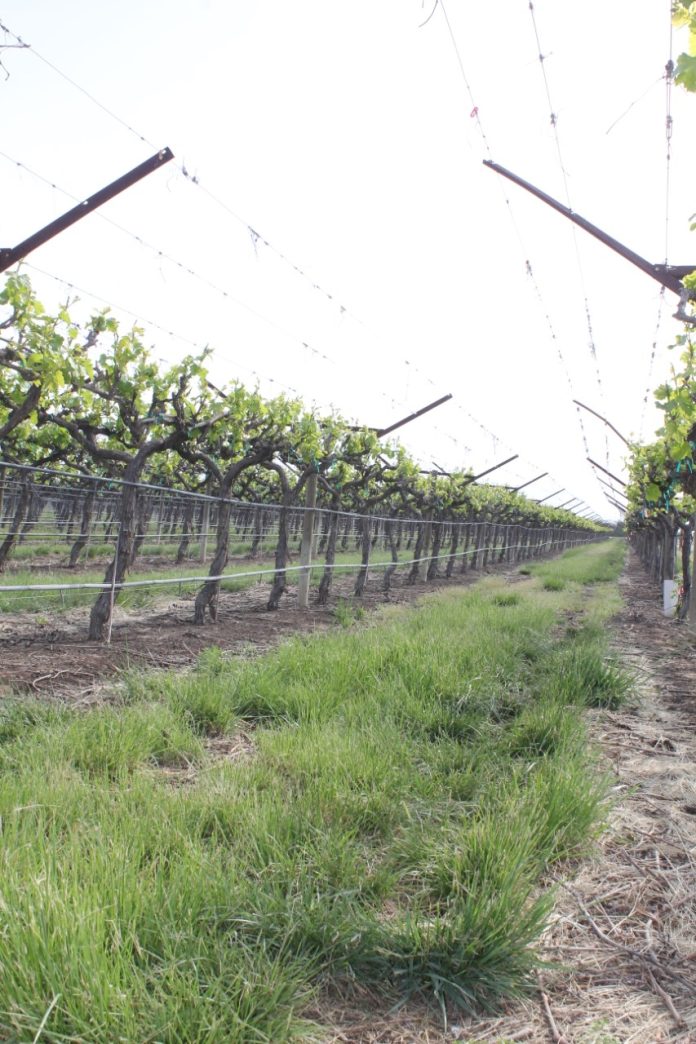

Early detection of pocket gopher mounds in a vineyard can help with control decisions and prevent damage to grapevine roots.
These 6- to 8-inch rodents live underground and are rarely seen. They spend most of their time in a tunnel system 6 to 12 inches below the soil surface. The tunnels have lateral branches used for feeding or pushing excavated soil to the surface. These fan-shaped soil mounds over tunnel openings are signs of a pocket gopher infestation.
The UC Integrated Pest Management guidelines for pocket gophers in vineyards note that the tunnel openings are almost always closed with soil plugs unless active excavation is occurring. Gophers can be active throughout the year in vineyards and other irrigated crops. Populations are more likely to be present where there is extensive weed growth, including nutsedge. Cover crops, particularly perennial clovers and legumes, are also favored by pocket gophers. If food is available and no biological or other controls are implanted, populations can increase to 30 to 40 gophers per acre.
Gopher control can be problematic in vineyards adjacent to empty, weedy fields or crops where gophers are not controlled.
Trapping and baiting are listed as the most effective control methods. UCCE Kern County Farm Advisor Julie Finzel said when she receives calls about pocket gophers, she first asks growers what control has been tried and information on the infestation.
Recognition of pocket gopher mounds should be followed by some control methods. Mounding activity is highest through late winter, and the most common controls, trapping and baiting, are easier when vineyard soils are moist. Darker mounds indicate new activity. Nearby vines should be checked for girdling of roots or crowns at or below soil.
Biological and cultural controls include predators who may not keep numbers low enough, tilling which can disrupt tunnel systems and flood irrigation where possible.
According to UCCE Specialist Roger Baldwin, gopher populations don’t cycle like voles do. Over large geographical areas, their numbers are steady across years, although within a specific area, numbers can certainly increase or decrease given local conditions.
The UC Guidelines advise an integrated approach to gopher control. Baiting can be done with multiple dose anticoagulants, strychnine or zinc phosphide, which may require a permit from the county.
Baiting requires finding the main tunnel to place the bait. Start by finding the plug of the gopher mound and probe from 4 to 12 inches behind the plug. A tunnel is found when a drop in the probe is felt.
Trapping also requires some labor and skill for success. The Macabee Gopher Trap or the Gophinator are recommended. Traps need to be fastened in place and their location marked so they can be found.
Baiting with poison is another technique. Special probes that release bait are available. Strychnine and zinc oxide are legal in California for ag use, and they kill with one feeding. Anticoagulants may take multiple feedings. Poisons can have secondary effects. Tractor-drawn devices can create artificial burrows and deposit bait as they do, but soil conditions are critical for effectiveness.




















